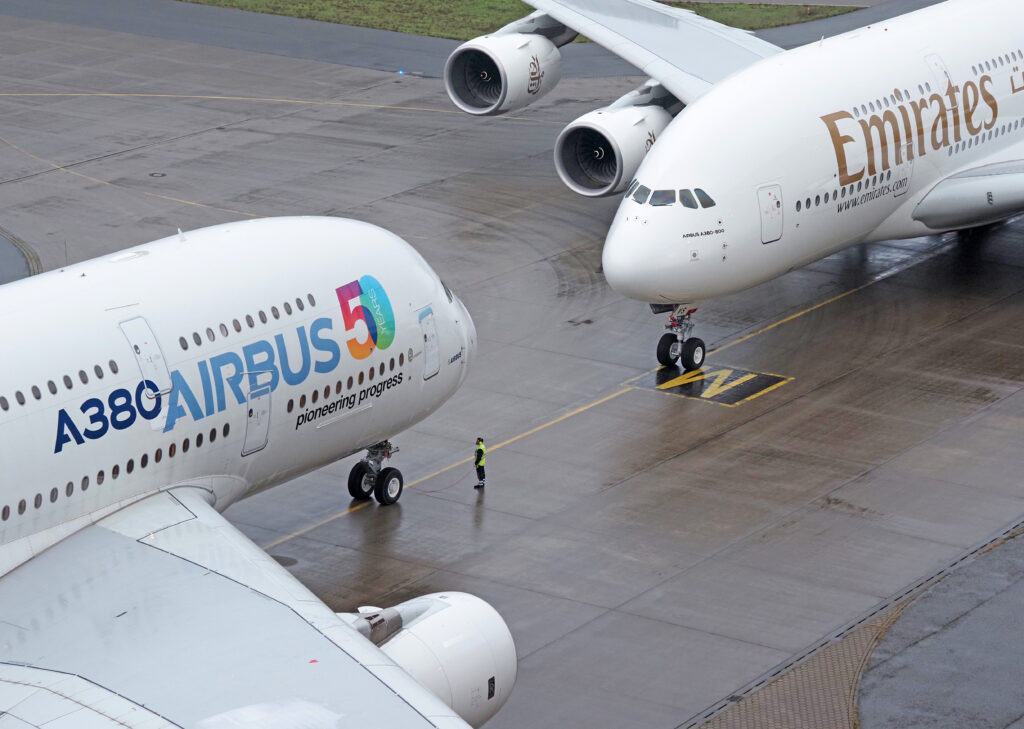PARIS- Two years after the final Airbus A380 jetliner rolled out of its Toulouse factory, the aviation giant is preparing to bring some of these superjumbos back for wing-spar cracking inspections at their birthplace.
Despite the plant’s transformation to accommodate smaller aircraft, Airbus is dedicating part of its colossal assembly hall to inspecting and potentially repairing A380s, particularly those belonging to Emirates (EK), its largest customer.
The need for inspections arises from accelerated cracking detected in wing spars of A380s that were stored during the pandemic.
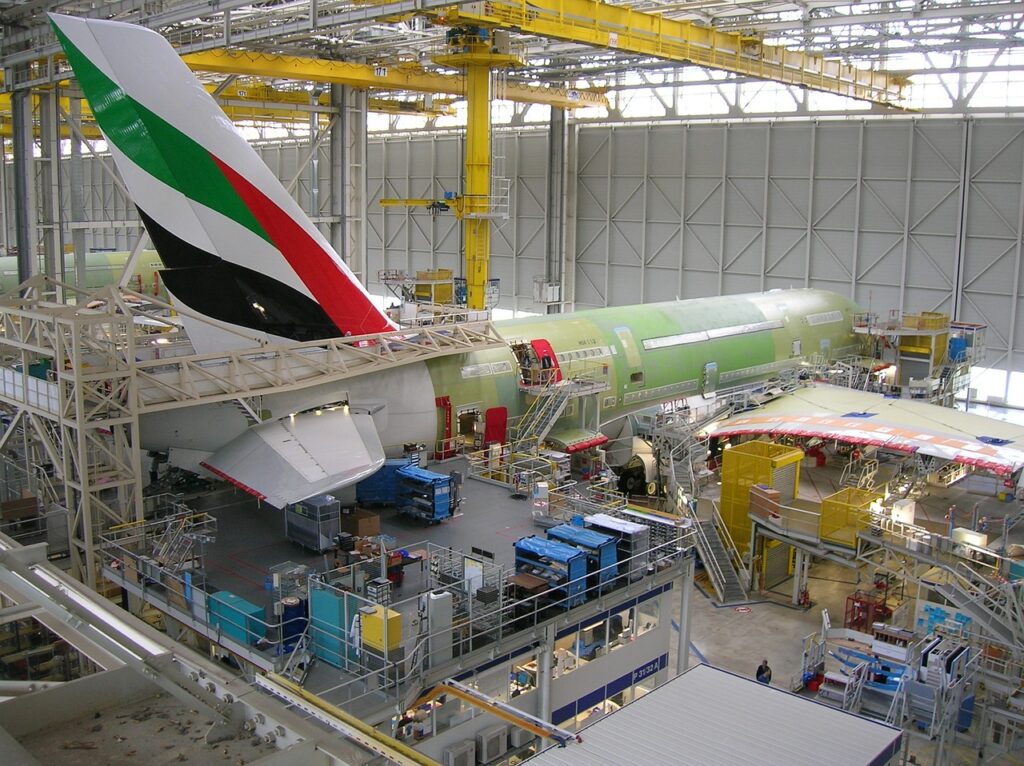
Airbus A380 Reported Wing-Spar Cracking
Airbus began constructing a specialized “A380 Emirates” inspection facility within the Jean-Luc Lagardere building in December to address the issue. The project is expected to continue until the third quarter of 2024, as stated by the Force Ouvriere union.
In a notice, Airbus revealed that it would provide special bonuses to workers involved in the project, starting from September and retroactively covering the period since the end of last year.
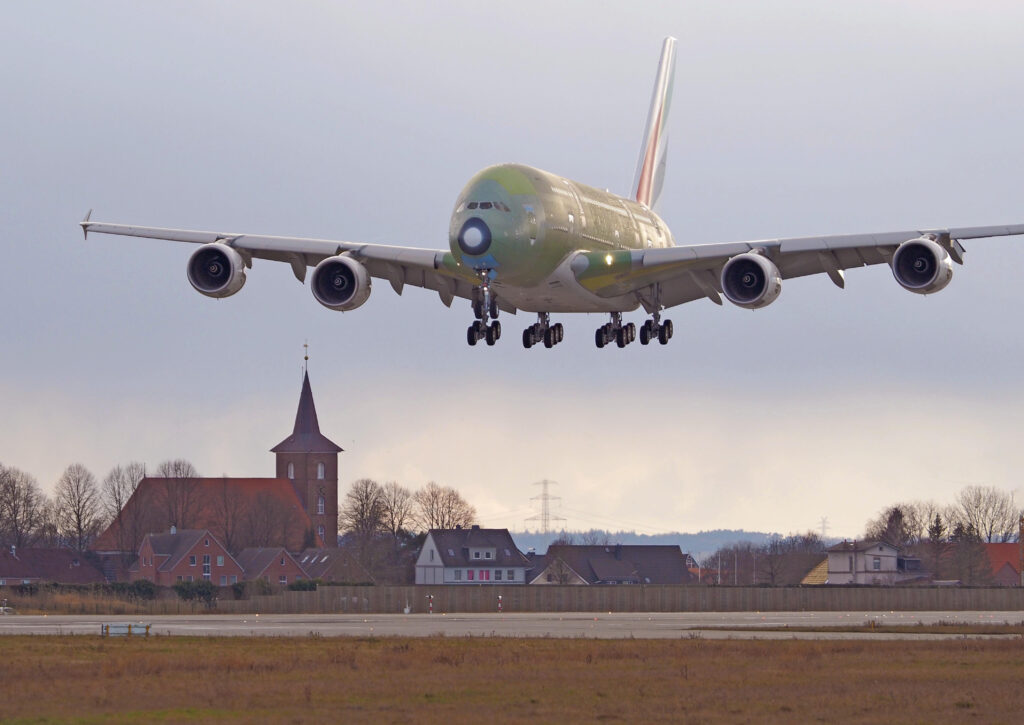
An Airbus spokesperson confirmed their support for the inspections, stating, “We are supporting inspections on some aircraft in Toulouse.”
Emirates, the affected airline, assured that the inspection and repair program would have minimal impact on its operations.
The process is based on specified time limits determined by the installation of each wing, and the airline anticipates collaborating closely with Airbus and its maintenance and repair partners to meet the requirements.
While most of the tasks will take place at Emirates Airlines Engineering Centre, Airbus will offer additional assistance in Toulouse.
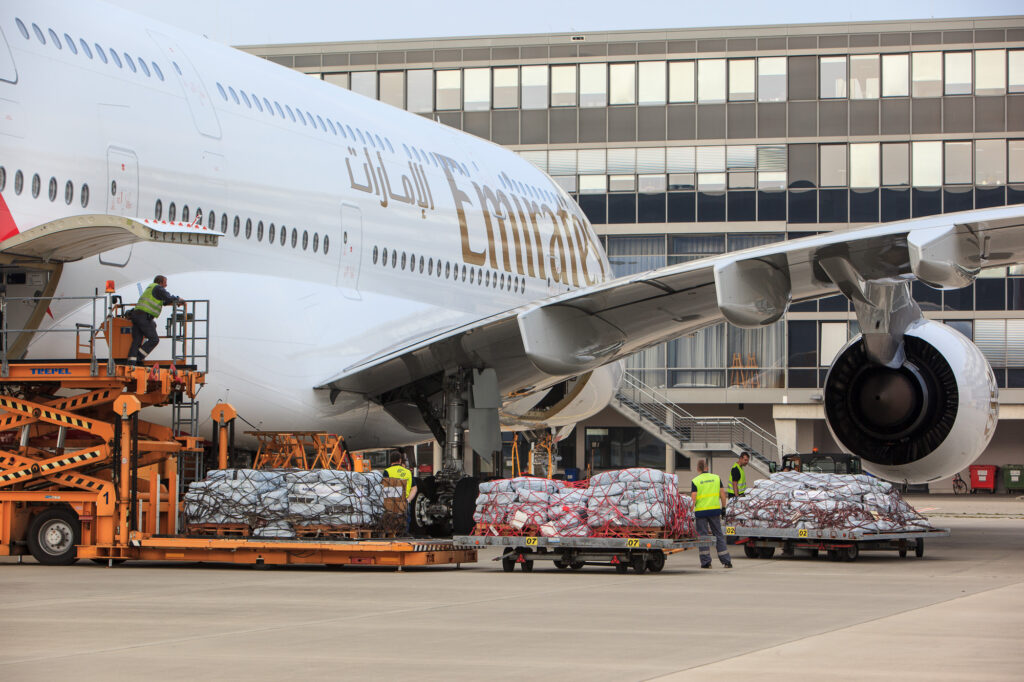
Ground Time and Operational Profit
The duration of the inspections and repairs will vary depending on the findings, but it is estimated to average around 60 days per jet.
Emirates President Tim Clark recently stated that “the first aircraft is already undergoing repairs. He expressed confidence that the issue would have “very little impact on our operating profit.”
The Jean-Luc Lagardere site opened in 2004, is renowned as the world’s second-largest building in terms of usable space.
Despite the shift in focus toward smaller aircraft, it remains one of the few industrial plants with sufficient height to accommodate A380s. Additionally, there is a shortage of third-party repair capacity for these large aircraft.
Airbus and Boeing have been modifying sections of their iconic factory buildings as the industry adapts to the changing demands of air travel, emphasizing smaller models over discontinued four-engined jumbo jets.
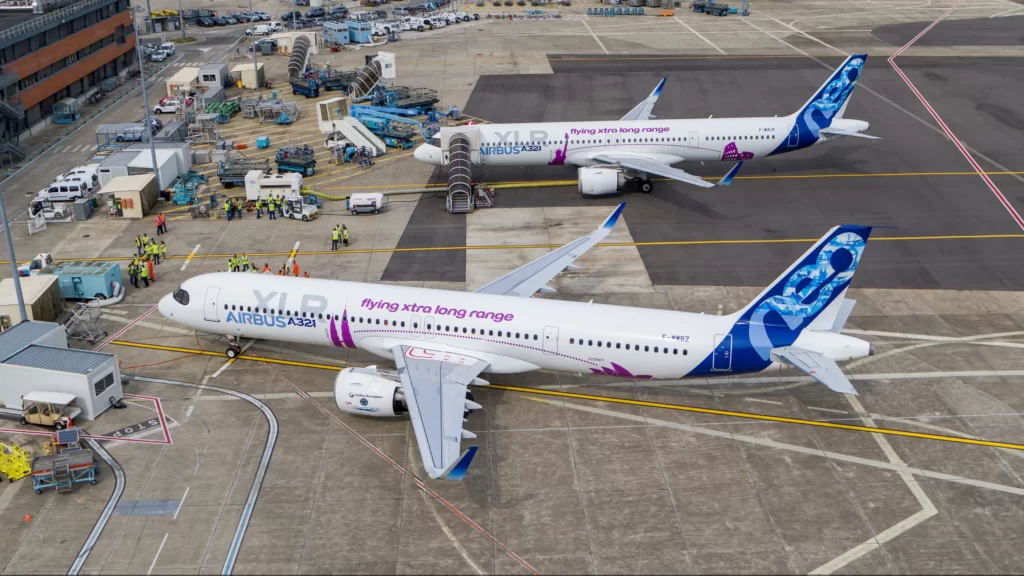
Transitioning to Smaller Jets
Airbus data released on Friday revealed that orders for the A321neo, a single-aisle aircraft, have exceeded 5,000 units, making it the company’s best-selling model. This shift toward smaller, more in-demand aircraft reflects the changing landscape of the aviation industry.
In conclusion, Airbus is undertaking inspections and potential repairs of A380s in its Toulouse factory due to wing-spar cracking issues. The inspections, specifically on Emirates’ A380s, are taking place in a dedicated facility within the Jean-Luc Lagardere building.
Despite the transition to smaller aircraft, Airbus is committed to addressing the concerns surrounding the A380s. Collaboration between Airbus, Emirates, and maintenance partners aims to minimize operational impact.
Stay tuned with us. Further, follow us on social media for the latest updates.
Join us on Telegram Group for the Latest Aviation Updates. Subsequently, follow us on Google News.

